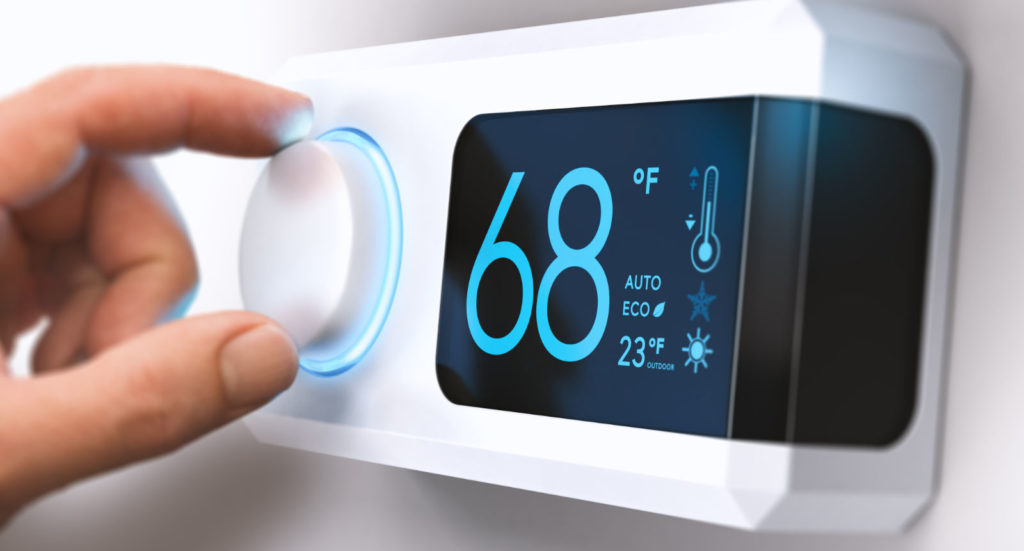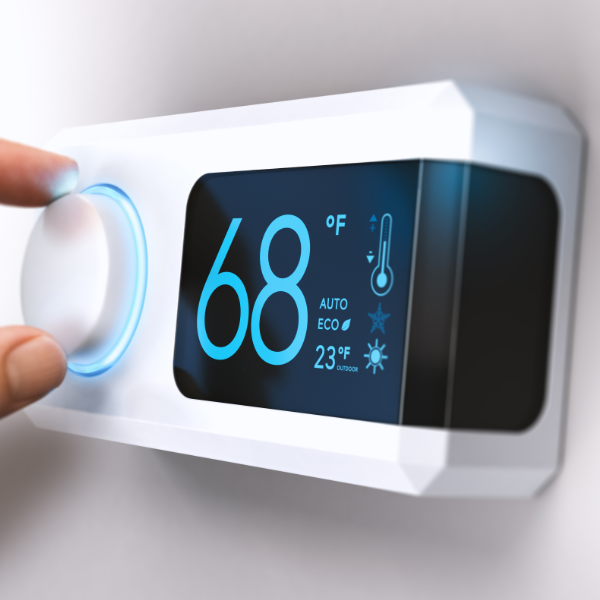
Though furnaces are less complex than HVAC systems, they need just as much maintenance to operate efficiently and reliably. Damaged, worn-out, and dirty components can affect a heater’s performance and lifespan. Being familiar with the various parts, their functions, and the early signs of malfunction, will help keep the unit running for years to come.
Furnace Blowers
A blower is aptly named after its function, to blow. They circulate indoor air through the ductwork. Making sure the blower is working without impediment can help to reduce energy consumption and corresponding utility bills, while also improving results: a warm, comfortable home.
There are two types of fan systems: direct-driven and belt-driven. The direct-driven system is considered more dependable and lower maintenance, with the fan propeller connected directly to the shaft of the motor. Whereas in belt-driven systems, more parts means more potential problems. Pulleys and a belt move the impeller fan, requiring more maintenance such as lubricating shaft bearings, aligning sheaves, and adjusting belt tension.
Blower components that pose the most common problems are:
Motors
The blower motor powers the shaft and impeller fan to spin, at one or varying speeds depending on the type of motor. Issues with the motors are common. They are often damaged by other parts not working right, causing overheating.
Capacitors
The capacitor is essentially a battery that helps the motor start up and run at optimal power. If the motor isn’t starting, or if it is running hot or slow, it could be a failed capacitor needing replacement.
Bearings
Bearings are needed around the shaft to reduce friction when in motion. Worn-out bearings will make all sorts of noises, from humming to grinding to screeching, before the blower stops working altogether.
Draft inducers also have fans with bearings. These fans vent combustion gases out of your furnace before the burners light, so if their bearings are bad, they will only make noise for a minute or two while the furnace fires up.
Common Malfunctioning Furnace Questions
What is that sound?
Not all “warning sounds” will be loud or alarming. Sometimes it will be a ticking, low buzzing, or faint grinding noise. And not all small sounds will grow into a louder one before complete unit failure. Familiarize yourself with the sounds your heater makes when it is running optimally, so you know the difference when it isn’t.
Can you feel air blowing out of the vents?
Airflow is an easy way to know if your heater isn’t working right. If air isn’t moving, it could be the blower, but more often insufficient airflow is caused by clogged filters or blocked registers. See if air filter(s) need replacing and make sure vents around the home aren’t covered by furniture or rugs.
Why is the energy bill suddenly higher?
A heating system that is running rough uses more power. A dirty or deteriorating blower motor will affect how much energy is needed to operate, but it also could be something like a leak in the air ducts causing the spike. If your utilities jump up, the solution might be found in servicing your furnace or HVAC.
Is something burning?
A “hot scent” in the air, such as the smell of plastic melting or dust burning, is always a concern. If related to your furnace, your system will likely turn itself off before heating to the desired temperature. For safety reasons, always call a professional when you smell something burning, in case it is electrical, gas, or heater-related.
What causes furnace failure?
Blowers work less efficiently over time, like everything, but routine care over the years can keep it working for stronger, longer. Furnace maintenance is a cost-effective way to help prevent needing major repairs or complete replacement. Technicians check for a long list of potential issues, including:
- Parts are free of debris and dust build-up.
- The filter is clean.
- Lubrication is sufficient.
- Bearings move smoothly and quietly.
- The motor capacitor starts and runs at the right power.
- Belts are in good condition and at the correct tension.
- Sheaves do not show any signs of wear or damage.
RAS technicians are thorough to ensure every part of your furnace or heating system is operating at its fullest capacity.
RAS TX is at your full service, residential and commercial, heating & AC
For heating and air conditioning system installation, repairs, maintenance, and more, you can trust the experienced technicians at RAS. We are proud to provide homeowners and businesses in the Houston area with quality HVAC, furnace, and air quality services. Call 713-266-2665 to schedule an appointment.





